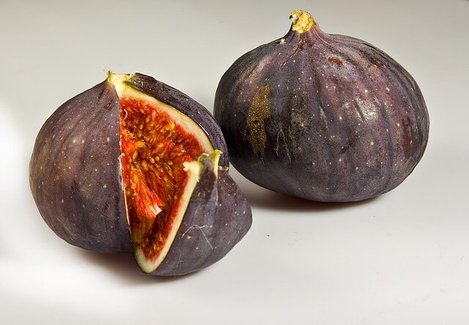Comme de nombreux autres fruits, la figue possède de nombreuses vertus dans le domaine de la santé. Améliorer la constipation, réduire le cholestérol, diminuer la tension artérielle, perdre du poids, prévenir l’ostéoporose et le risque de maladies cardiaques, favoriser le bronzage, en plus d’apporter des prébiotiques, voilà une liste non exhaustive des propriétés de ce fruit à petits grains bien caractéristique. Elles sont également riches en calcium, en potassium, en phosphore et en fer.
Son effet laxatif est incontestablement lié tant à sa richesse en fibres qu’à ses apports de prébiotiques qui soutiennent et reconstituent la flore intestinale.
La figue et son jus sont fortement alcalins. Ils sont donc très utiles pour équilibrer le pH tissulaire. De nos jours l’acidose est de plus en plus fréquente et elle est source de nombreux mal-être ou même de maladies.
Sa couleur rouge foncé nous révèle qu’elle contient beaucoup d’antioxydants qui comme on le sait aident à prévenir les dommages occasionnés par les radicaux libres.
Connaissez-vous les psoralènes, un composé particulièrement intéressant, dont la figue constitue une source importante ?
Cette molécule naturelle permet d’améliorer des affections de la peau telles que le psoriasis, l’eczéma et le vitiligo.
Leur forte concentration en potassium les rend utiles dans la prévention de l’hypertension artérielle, dans les problèmes cardiaques et nerveux. Et la combinaison du potassium et du calcium qu’elles contiennent a un effet préventif sur l’ostéoporose.
La sève du figuier est utilisée pour certaines atteintes de la peau comme la teigne, les verrues, les piqûres d’insectes et les irritations.

Quant au macérat glycérine (extrait de bourgeon) de cet arbre, il favorise le sommeil et la fonction onirique.
Il existe de nombreuses variétés de figues qui sont cueillies à maturité et qui peuvent être séchées afin d’être disponibles toute l’année. Les figues fraîches au goût délicieux et à la texture bien particulière sont plus rares. Actuellement, on en trouve de plus en plus d’origines biologiques, mais la majorité est encore issue de l’agriculture traditionnelle. La figue est l’un des fruits connus parmi les plus anciens.
Il existe de nombreuses préparations qui intègrent les figues fraîches ou séchées. Elles seront parfois cuites. On en trouve sous forme de purée, de confiture ou encore dans certaines pâtisseries ou dans certains pains.
Les États-Unis sont le 3ème producteur mondial de figues sèches. C’est la Californie qui grandit de 98 % des 11 000 tonnes des figues fraîches produites annuellement aux États-Unis.
Vous ignorez certainement la petite particularité de ce fruit qui n’en est pas vraiment un, comme les tomates ne sont pas des légumes. La figue n’est donc ni vraiment un fruit, ni vraiment un légume, non plus. Elles constituent en fait la fleur de la plante, tandis que leurs graines en sont le fruit.
Comment faire pour conserver ces figues fraîches cueillies à maturité qui sont très fragiles et ont une durée de vie très courte ?
Si vous êtes soigneux et que vous les posez avec délicatesse sans les laver dans un sachet en papier dans un endroit frais ou au réfrigérateur, vous pourrez les conserver cinq à sept jours. Si le fruit est déjà un peu abîmé et très mûr, il ne se conservera que durant deux ou trois jours. Les figues peuvent également se congeler, ce qui permet de les garder 6 mois maximum.
En ce qui concerne le choix du fruit, il doit être propre, odorant et un peu ferme. Évitez d’acheter des fruits ramollis, suintants ou fendus. Quant aux « cicatrices » sur la peau, elles sont le résultat des coupures des feuilles qui ont effleuré la peau des figues, mais elles n’altèrent pas du tout sa qualité nutritionnelle.
Sources de cet article :
http://www.whfoods.com/genpage.php?tname=foodspice&dbid=24
http://nutritiondata.self.com/facts/fruits-and-fruit-juices/1884/2
http://www.bbcgoodfood.com/howto/guide/health-benefits-figs
http://www.fruitsandveggiesmorematters.org/fresh-figs
http://www.britannica.com/EBchecked/topic/206536/fig
Pour en savoir plus : http://www.naturalnews.com/046872_figs_potassium_fiber.html#ixzz3DMp4h37F



